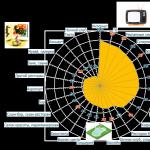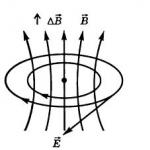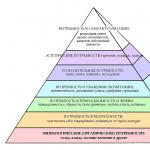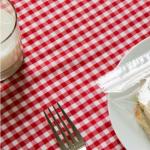It’s unlikely that anyone would argue that any work is much more successful if everything you need is at hand. But this “necessary” can accumulate in such a quantity that a mess on the table becomes inevitable. If this situation annoys you and prevents you from concentrating, then it’s time to seriously think about how to rationally place all the little things and papers on your desktop.
Let's prepare the desktop in order:
We recommend starting with a “disposition” check. Take a look at your desktop and decide: does everything currently placed on it really need to be on the tabletop? It may make sense to look for other, more rational storage places for some small items. Try these 3 steps and you'll likely see a significant reduction in the amount of stuff you need to store on your desk.
Step No. 1 - check the rationality of storage in boxes:
If your desk comes with a large drawer, chances are it's already in active use. However, are you sure that any little thing is easy to find there?
No? Then you definitely need to get internal compartments! Transparent containers and dividers, boxes with low sides, small trays and even a kitchen plastic tray for cutlery - all this will perfectly sort small things in desktop drawers, and finding them will become an elementary task. Here's what it might look like:
1.
2.
3.
Step No. 2 - is it possible to install additional add-on modules?:
If your desktop can be called wide (more than 50-55cm) or such a length that there is still enough space on the side of the monitor, or you use a laptop - in all these cases, think: is it possible to purchase an “add-on” for the table - with shelves and boxes?
4.
5.
6.
step #3 - use the sides of the table:
If during the previous two steps you realized that there is still not enough space, use an original solution: move some of the small items or even papers to the side racks of your desktop. They will help you in this matter
Kitchen rails + rings for curtain rods + folders with pockets;
magnetic strips, for example, those designed for knives;
hooks, containers for hanging on rails or wall glasses for the bathroom
7.
8.
9.
How to store stationery and papers on your desk:
Now that you have already decided what must be placed on the countertop, it’s time to get inspired by ideas for storing small items.
storage of pens, pencils, felt-tip pens and stationery items:
If you need these little things to always be at hand (and in large quantities), there is no point in hiding them in drawers. Cute glasses, trays, boxes, fabric pockets, wooden stands, low vases made of thick glass - anything that you like in appearance and will be roomy enough will do.
10.
11.
12.
13.
14.
15.
16.
17.
18.
storage of small papers and letters:
Even today, when letters, cards and bills most often come to us by email, we cannot get rid of small papers with temporary relevance. However, these can also be sheets of paper for notes from the block (to place which you will not acquire a cork or magnetic board). To take the frustration out of this petty chaos, look for cute mini racks or holders to conveniently store small papers. For example, these:
19.
20.
21.
22.
23.
24.
25.
26.
27.
storage of business cards:
Usually they are placed in business card holders, but if you always need to have several business cards at hand, create this “mini-corner” for them:
28.
29.
30.
storage of important documents:
Some documents need to be stored for quite a long time. Or perhaps your work involves a large number of A4 sheets. It is optimal, of course, to find a place for them on shelves or a rack. But if something must always be at hand (i.e. on the table), use a ready-made solution: minimum folders = maximum compartments in them.
31.
32.
33.
mixed storage (assorted):
For a small desktop and/or if you decide that a minimum of things and papers will be stored on the tabletop, multifunctional stands will be optimal. Different compartment sizes are suitable for different small items. If you like a creative look, find a small tray, tray or pretty box lid and place what you need inside.
34.
35.
36.
37.
38.
39.
40.
41.
42.
Looking at your desk cluttered with papers, you've probably thought of the phrase (wrongly) attributed to Einstein: "If a cluttered desk means a cluttered mind, then what does an empty desk mean?" And they calmed down, because disorder is a sign of a creative person. Or lack of time and desire to sort out this trash? We explain why you need to keep your workplace in order and advise you on how to organize everything correctly.
Order on the desktop does not mean sterile cleanliness. It is rather a well-thought-out system for organizing the workplace, which allows you not to waste time searching for papers and sorting through office rubble.
If clutter does not prevent you from quickly navigating through documents and files, then leave everything as is. Provided that the employer does not object. Or try our lifehacks for tidying up and compare after a couple of weeks to see if things have gotten better. Just for experimental purposes.
Pros of order
Starting your workday with a clean desk allows you to focus on important projects without being distracted by unnecessary trifles and old papers. Order inspires productivity and increases concentration. Also, you won't have to frantically tidy up before inviting a colleague to a meeting. As a bonus, you will earn a reputation among your superiors as a neat and organized person. After all, it’s nice to work at a clean table.
Cons of order
Of course, there are downsides to being okay. You won’t be able to throw your hands up in victory and shout “I found it!” after you have rummaged through the entire table in search of the required document. Don't enjoy spring cleaning when you throw out a few boxes of junk and your colleagues can clearly see that you've actually tidied up. Sitting at work, you are unlikely to find a pack of cookies that you forgot under a stack of papers a week ago. And now you can’t tell anyone that “this is a creative disorder,” because order cannot be called creative.

How to properly organize your desktop
1. Trash can within arm's reach
It’s not fun to play office basketball like this, but you can throw away unnecessary pieces of paper, wrappers, or broken pencils by simply stretching out your hand. Without the risk of missing the trash can or accumulating trash on the table until it takes over all the space. But do not place the trash can in the most visible place, preferably under a table or in a corner.
2. Keep the essentials on your desk
Imagine that a table is very expensive land in the center of Moscow, and only irreplaceable things are worthy of being on the surface. The most necessary things are at hand; those needed during the day are on the table. Put the rest in a drawer, and those rarely used in a box under the table. Rank things by demand, and there will be significantly less of them on the table. At the same time, do not go too far, putting everything away - the necessary things should be within reach, otherwise you will constantly be rummaging through all the shelves and boxes in search of the “suddenly” needed stapler.
3. Consider a storage system
Use desk drawers, shelves (if any), boxes, stands and other surfaces and containers that will help you properly organize your workspace.
4. Create a catalog for papers
If you constantly deal with papers, sort them and store them in a “catalog”. You can sort by name, date, significance or other important parameters that will allow you to quickly identify the file. Of course, you will have to tinker with creating such a catalog, but then you, like a real librarian, will find the necessary papers in a few seconds.
5. Paper “purgatory”
Create a stack of “incoming files” for new documents that you don’t have time to sort out yet. The stack should be limited in the number of files, otherwise you risk accumulating papers, constantly postponing review until later.
6. Go digital
Transfer all your notes to your smartphone or computer and throw away any notes stuck to your monitor, wall or table. Digital notes aren't as bright and won't be an eyesore all day, but you can set a notification when you need to return to a given task.
7. Cleaning ritual
Get into the good habit of tidying up your desk at a certain time. For example, on “Maundy Thursday” before going home. Or on Friday, if you are sure that you can stay 10 minutes late at the end of the work week. Throw out trash, excess papers, disassemble the table surface and drawers, check the space under the table. If you do this on a regular basis, you can do it in even 5 minutes.
Use these simple tips and everything will be fine.
This also happens...
Desktop order- this is such an organization of the workspace of the table in which every thing has its place.
Needless to say, order makes our life much easier - that is why, from childhood, our parents forced us to put things in their places and throw away unnecessary things. Many years have passed since my carefree childhood. Now we have to restore order “under the supervision” of our boss or our neat colleagues in the office. In the end, we have to agree that order is simply necessary. Then the work gets done and time is not wasted.
Advantages
- In the eyes of your management and colleagues, a tidy desk helps you to be seen as a serious, hardworking and responsible employee.
- Order allows you to quickly find the necessary things and documents. This way you save working time, which you can now spend directly on work.
- Order allows you to regularly clear your workspace of unnecessary things, get rid of junk and old papers. It gives you more space, more space, more freedom.
Alarm bells
Very often it is difficult for an employee to realize that the clutter on his desk has become a real problem. Here they are - alarm bells that indicate that disorder needs to be dealt with:
- you spend more than a minute searching for the necessary papers, phone numbers, etc.
- you are repeatedly looking for information that you already found out some time ago (for example, you again contact the help desk or a neighboring department to find out the phone number, etc.);
- when you make yourself coffee, you have nowhere to put the cup - there is simply no room on the table;
- your table is decorated with a layer of dust - the cleaning lady does not dare to wipe it, since the entire table is covered in papers and other things;
- you don’t devote time to cleaning every day (at least a few minutes), but “rakes out” your desk drawers about once every six months;
- You firmly believe that your clutter is creative, and you don’t want to fight it, no matter what.
Have you discovered at least two of the listed signs? Then let's get to work!

Beauty and order!
Putting things in order
Remove everything unnecessary - from the table, from drawers, and so on. What to do about it? Throw away or hide away anything that is not related to work. Perhaps there are some things that are long overdue for taking home, such as souvenirs from a trade show, a gift from colleagues from a neighboring department, etc.
After the “revision” only the most necessary things should remain. Now you have to choose a place for each thing. Think carefully about what you put and where. You may need additional folders, a shelf, a stationery set, etc.
The best option for organizing your desktop drawers is as follows. Fill the top cupboard with essential papers. Place less urgent papers and documents in the middle drawer. Use the bottom shelf for personal items. Of course, other options for classifying papers also have a right to exist, but the system must be effective!
All things that you regularly use should be within reach. This means that you should be able to grab them by reaching with your hand.
Review your office supplies. Chances are that half of the pens ran out of refill, the pencils broke, and the markers dried out. Without regret, get rid of “non-working” office supplies by replacing them with new ones.
Place all diaries and notebooks in one place. However, why are there so many of them? When your notebook or diary runs out, don’t be lazy to “recycle” its contents. This means look through it and write down all the important information - phone numbers, account numbers, addresses, ideas. As you understand, you still don’t need the old plans for the day, just like the boss’s comments on work made at the planning meeting six months ago. Now you can throw away the diary itself or, at least, hide it away on a shelf.
To prevent papers from lying all over your desk, get a desk shelf for documents with compartments. To know which document is where, stick labels on it.
Extension cords will help get rid of numerous cords on the table. They will not allow the cords to get tangled with each other. You can tie cords for the same purpose. If there is such an opportunity, you can even equip your workplace with wireless technology. This will immediately solve the space problem.
If you don't have a personal wastebasket for papers, ask for one. Perhaps you don't throw away unnecessary papers because you're just too lazy to go to the next desk.

Another thing - complete order
Maintaining order
At the end of the working day, make it a habit to write down in your phone book the important phone numbers that you have accumulated during the day. Throw away the pieces of paper on which you marked them immediately. Spend a few minutes at the end of the workday tidying up so you can get straight to work in the morning. Do not store documents in paper form that you have in electronic form (except when absolutely necessary).
Curious to know
According to scientists, it takes about 16 hours to “clear away the rubble” on the average office employee's desk, as well as on the shelf and in the drawers. But it only takes 10 minutes a day to maintain order. Of course, provided that you put all things in their places, which must be clearly defined.
– this is not only a convenient arrangement of things. This is also our business card: a reflection of order in our head, in thoughts, in deeds. The statement also has a retroactive effect: by putting order on your desktop, you will significantly reduce the chaos in your thoughts.
In one of the experiments, interesting facts were discovered. Participants took turns entering a room where work tables were located with varying degrees of clutter on them. So, the maximum fluctuations in blood pressure and increased heart rate (markers of stress, anxiety) were recorded in participants who sat at tables on which there was pronounced disorder. These parameters fluctuated less when “working” at an empty table. And the stress indicators during seating arrangements remained virtually unchanged over the course of desks where order was put in place, i.e. Such tables were not stressful. In addition, during the “work” process, when the subjects were given tasks for attentiveness and speed of execution, the best results were achieved by those who received desks with order on them.
By the way, How to determine when it’s time to clean up your desktop? The answer is simple: as soon as you start spending a little more time than usual searching for what you need.
The desktop is an area of special attention
There are several zones on the desktop, and our attention is divided into them differently. In active attention we can hold 1 object - a matter, a thought about something, an object. What might be in this zone? This is a monitor, laptop, workbook - what you directly work with. And this is the center of the desktop, it main work area. That’s why you need to free this zone as much as possible from unnecessary objects: each of them draws attention to itself and attention simply dissipates.
There is also the so-called passive attention. It keeps up to 7 objects in focus. This is everything that surrounds the central area of your desktop. As you can see, the number of items in it should also be limited. These are the objects that we see with peripheral vision. This includes: stickers with reminders of important or urgent matters, a notebook, documents that you will need for work in the near future, a phone, etc.
AND remote attention zone– the farthest from the central work area. There may be anything that is rarely used in work. The most suitable option for unloading the first two areas of attention is wall above the desk. Trays with documents, stand,: pictures with goals, photographs, your personal motivators.
Now you know how important it is to keep your desktop in order and it’s time to put it in order.
- Remove everything unnecessary from the main desktop area. Leave what you will directly work with in the near future.
- Keep no more than 7 objects in the second attention zone. If you add something to this area, remove the same number of items from it.
- Move excess, rarely used items from your desk to the wall. Equip a shelf and hang a board for stickers.
- Clean up the main area of your desk every day at the end of the day, and clean up the other areas at least once a week. Keep your desk tidy and make it familiar to you.
- Sort your documents into categories and create separate folders for each and label them. Use vertical trays for folders and documents - they save space and make it easier to find the document you need.
- Organize your document folders according to urgency. Accordingly, urgent ones should be closer to the zone of active attention. Name the separate folder “kairos”. It should contain documents tied to a specific moment: “give it to Sidorov when he comes to see me,” “take it with me when I go to the head of the department,” etc. “Kairos” is a convenient moment, circumstances for doing something.
- Use stickers. Write down priority tasks on them, place a sticky note in the attention zone, next to the active work area of your desk. But don’t get too carried away, don’t turn the table into a colorful toy.
- Stationery should always be in the same place. Use desktop organizers after removing all unnecessary items. You yourself know what you need in your work and what you don’t. And don’t keep anything “in reserve.”
- Don't clutter your desk with office equipment. Remove everything you can from your active attention zone, unless your job involves scanning and printing documents. Use wireless technologies: for mouse, keyboard, printer, scanner. A pile of wires on your desktop is a real attention hog.
- Be sure to keep a wastebasket near your desk. Make it a habit to “feed” the basket regularly. Set aside time for this, for example: at 12 o'clock feed the basket. You will definitely find something to throw into it, this technique works 100%.
What does your desktop look like? I'm waiting for your comments!
Windows is the world's most popular operating system, and currently, according to Net Applications.com (http://marketshare.hitslink.com/), approximately 92% of personal computers are running it. Such an impressive figure clearly indicates that the developers of this OS really managed to create a reliable and easy-to-use system. However, as you know, the ideal is always unattainable, and therefore, with all the advantages of Windows, it can be made even more convenient by connecting a number of utilities from third-party manufacturers. It is such programs that will be discussed in this article.
Tidying up your Windows desktop
For many users, chaos reigns on the PC desktop: shortcuts, files, folders, images and web links are scattered across them, often without any logic. As a result, the easiest and fastest way to access data and launch applications - that is, from the desktop - in practice turns out to be not so fast at all, because most often it is not immediately possible to find the right one among a host of shortcuts. To make it easier to organize shortcuts, folders, files and links on your desktop, you can set wallpaper with colorful fragments and distribute shortcuts and other elements present on the desktop among them. In the future, this will help significantly save search time.
However, there is an even better way - use the Fences utility, free for non-commercial use (http://www.stardock.com/products/fences/; 9.03 MB; $19.95). With its help, it is easy to instantly restore order on your desktop by conveniently distributing chaotically scattered shortcuts into thematic blocks (Fig. 1). These blocks appear highlighted on the desktop and, of course, delimited, which allows you to quickly find the necessary elements. The easiest way to carry out such a desktop reorganization is to select one of the ready-made Fences layouts, as a result of which icons and other elements are automatically grouped depending on their category (programs, files and documents, folders, etc.). After this, you can manually adjust the position and size of the blocks, their name, transparency level and color, as well as a number of other parameters. If none of the built-in layouts appeal to you, then the developers have provided an alternative way to reorganize your desktop by developing your own layout. For such a layout, all blocks are created manually, and desktop elements are also manually distributed among them.
Rice. 1. The result of organizing your desktop using Fences
Along with shortcuts chaotically scattered across the desktop, no less problematic when working is the clutter of open windows, switching between which in practice is not so easy if there are already more than five to ten (ten, of course, only in the case of a widescreen monitor) window buttons on the taskbar . And it also takes a lot of time to arrange windows on the screen so that they do not overlap each other. It’s not difficult to deal with these problems if you use free utilities such as WinSplit Revolution and GhostWin.
By using the WinSplit Revolution utility (http://www.winsplit-revolution.com/; 1.49 MB), you can quickly adjust the position and size of windows in the visible space of the screen to ensure more productive work with them. The screen can be automatically divided into several parts (from two to six), each of which will display user-selected windows (Fig. 2). Thus, you will no longer have to spend time dragging windows around the screen, and the screen's working space will be used more efficiently. Obviously, the greatest benefit from this utility will be received by users working on modern wide-format monitors with high resolution, since the screen sizes of such monitors allow you to easily place several windows, allocating each of them its own piece of workspace. Managing the placement of windows using WinSplit Revolution is easy: you can arrange the desired windows in the desired way by pressing certain keyboard shortcuts (Ctrl + Alt + 1, Ctrl + Alt + 2, etc.) or by clicking on the buttons of the pop-up panel called up by clicking on icon in the system tray. Another good thing is that after restarting the computer, there is no need to restore the location of the windows, since the program (with appropriate settings) remembers the coordinates and sizes of windows on the desktop and restores them in exactly the same form after the reboot.

Rice. 2. Possible option for quickly placing working windows
with WinSplit Revolution


















